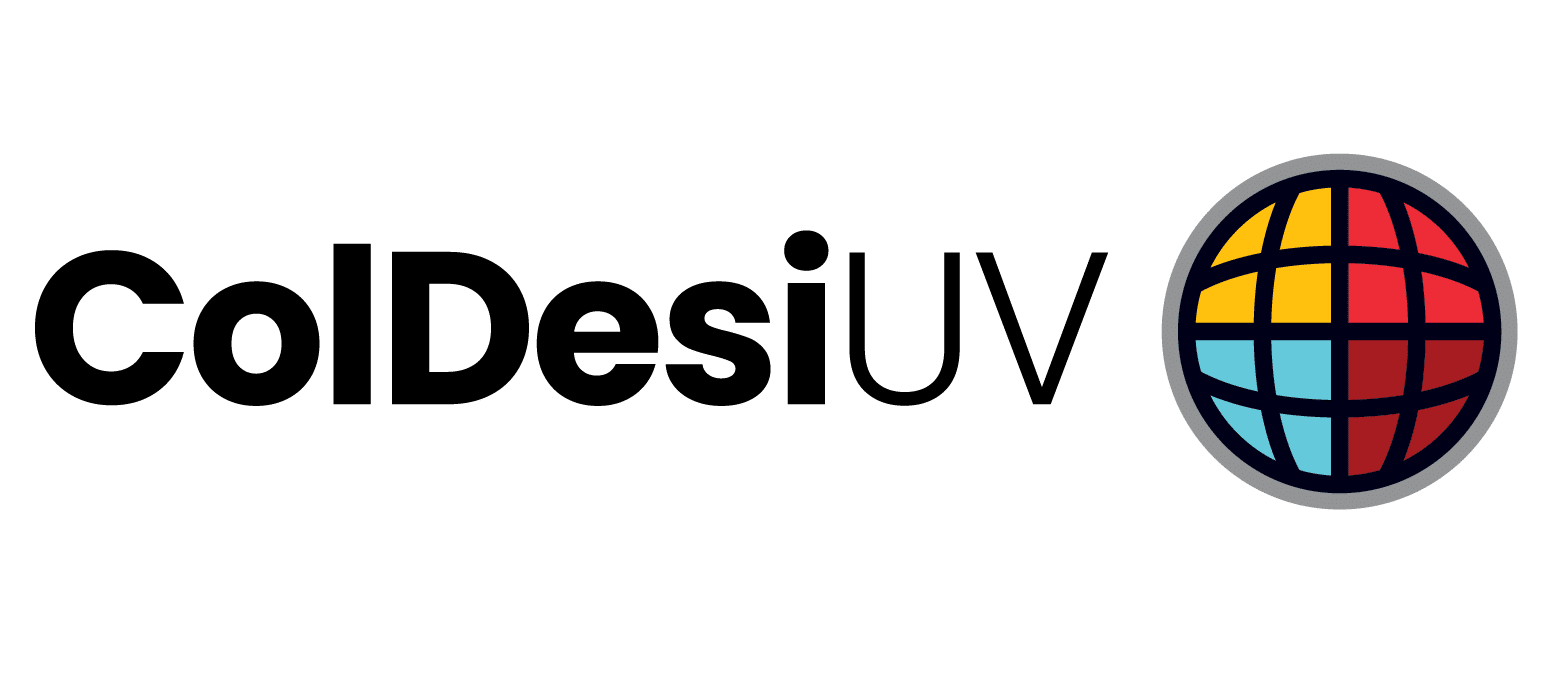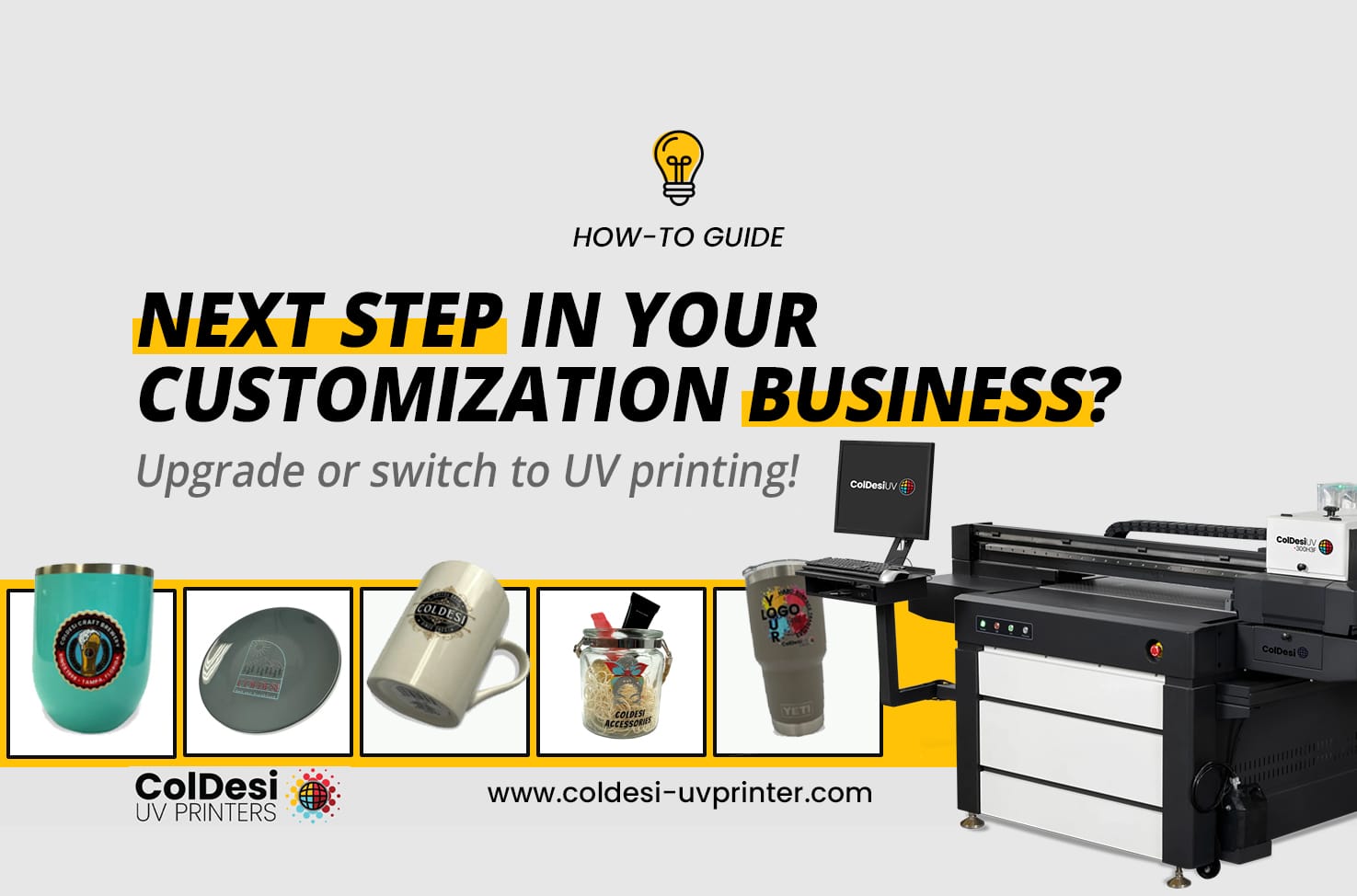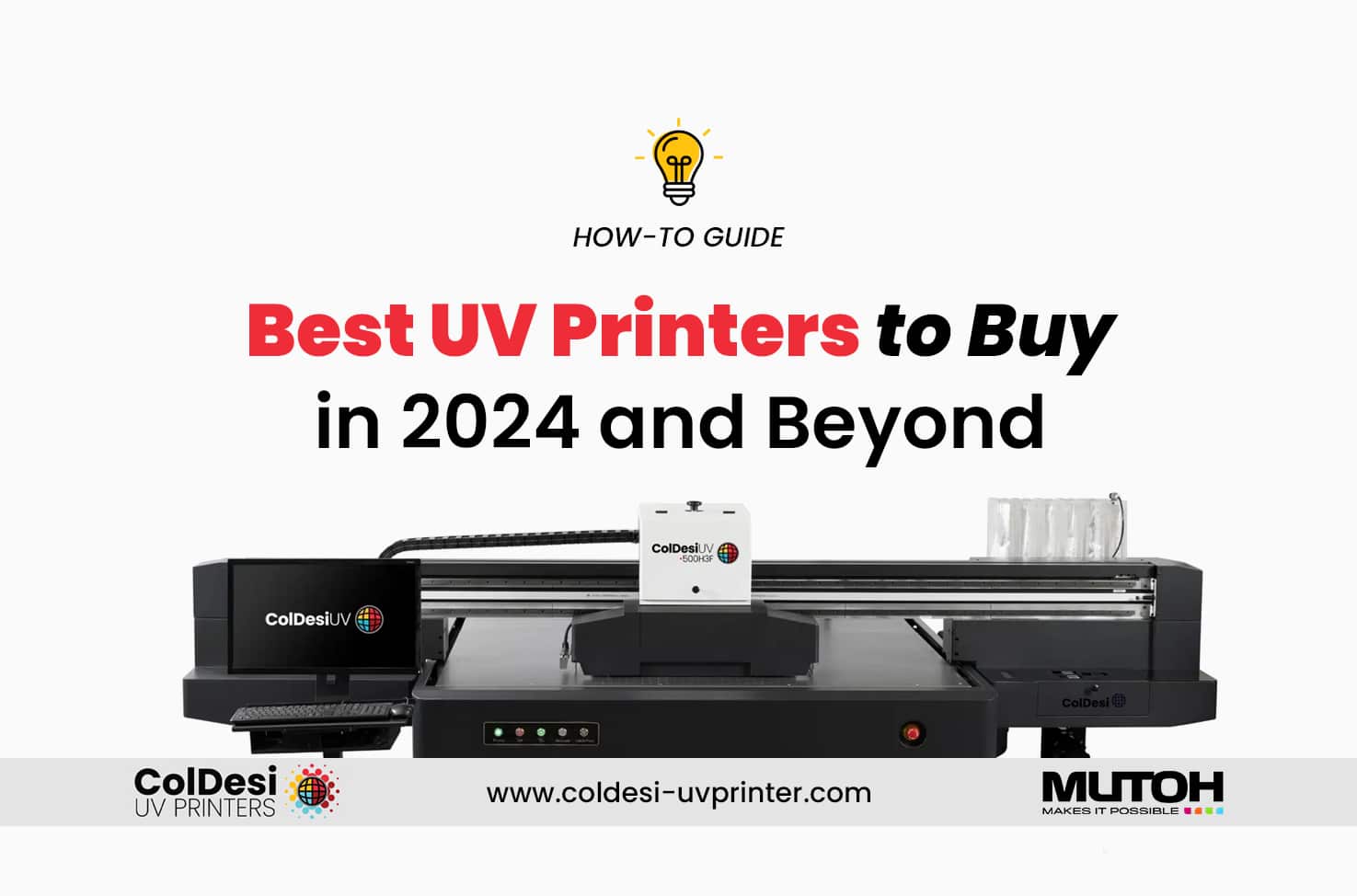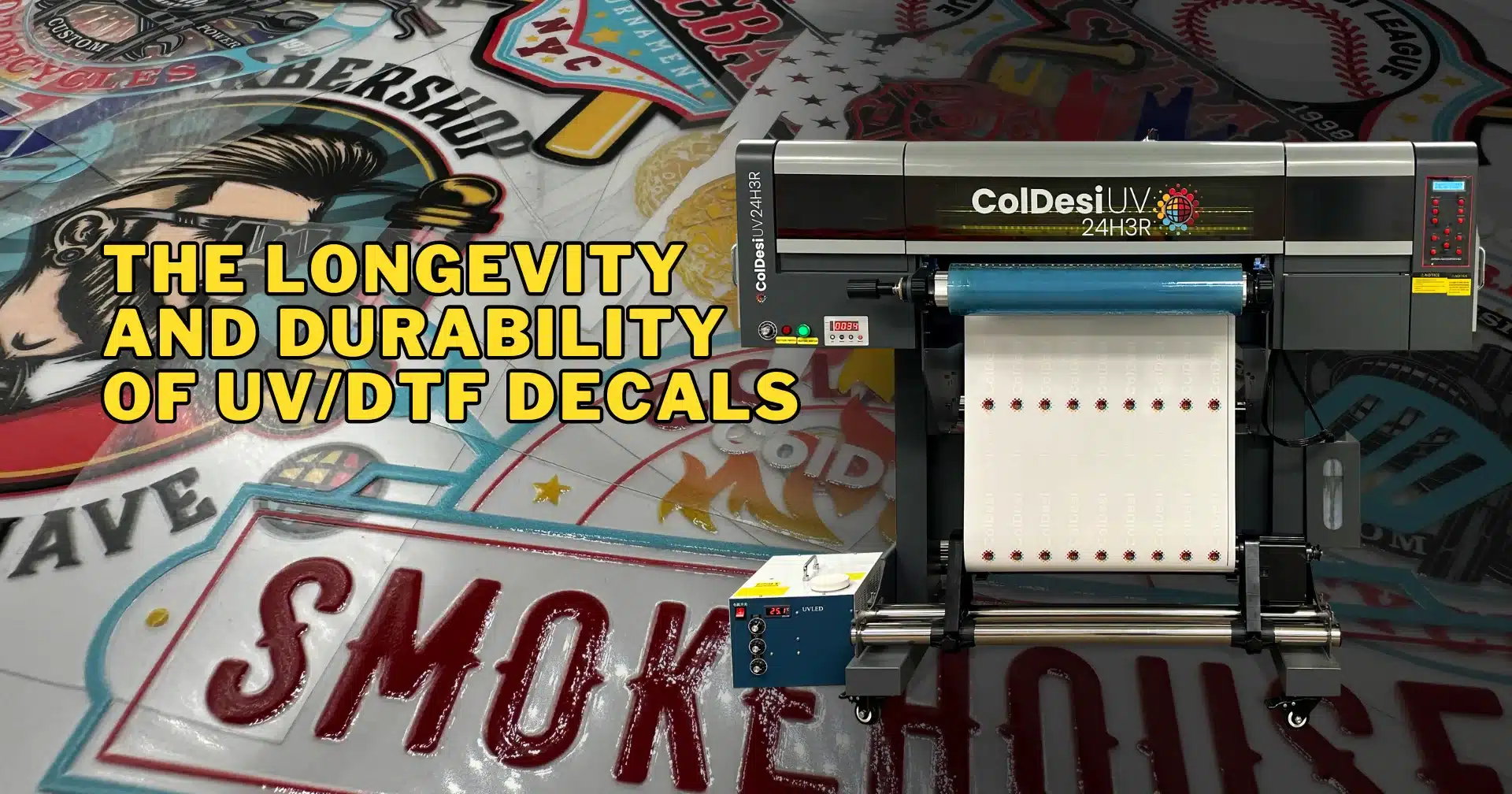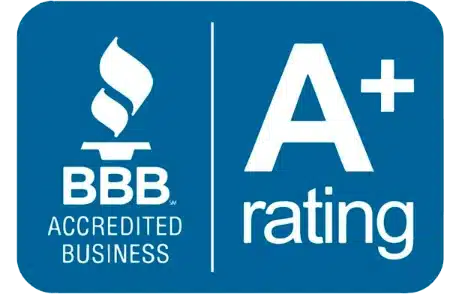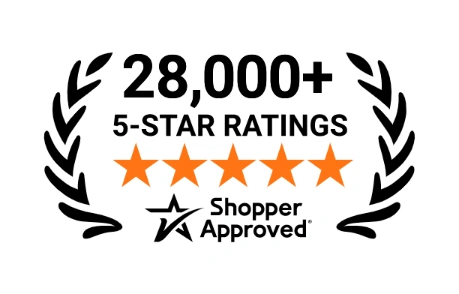What is UV Direct-to-Object Printing?
UV direct-to-object printing is a digital technique that uses UV light to cure ink on an object.
This process produces higher-quality images and text compared to other printing methods. It can print onto three-dimensional objects of various shapes and materials, such as wood, glass, metal, plastic, and ceramics.
It opens endless possibilities for personalized and customized products across all industries, from signage and promotional items to personalized gifts and industrial parts.

UV direct-to-object printers use UV-curable inks that instantly cure when exposed to ultraviolet light. This curing process ensures vibrant colors, sharp details, and durable prints resistant to scratches and fading.
Printing onto objects eliminates the need for extra adhesives or substrates, reducing production time and costs, while the printer’s flexibility allows businesses to print designs with intricate details and photographic quality. This technology supports both small-scale customization and large-scale production, while maintaining consistent print quality.
ColDesi is a leading provider of UV printers, supplies, and consumables, known in the industry for top-notch training and support. The team at ColDesi is committed to helping customers produce high-quality UV prints, offering comprehensive assistance throughout the printing process.
Why Do Businesses Choose UV Direct-to-Object Printing for Customization?
UV direct-to-object printing offers versatility, efficiency, and unmatched quality, with UV-LED inkjets capable of producing detailed graphics on a wide range of media. This provides greater flexibility, efficiency, ease of use, and convenience. ColDesi’s UV printers are equipped to meet the demands for rapid on-demand printing.
What Are the Benefits of UV Direct-to-Object Printing?
- Quick Drying Time: UV direct-to-object printing has a rapid drying time, reducing the interaction between the chemicals and the substrate, allowing for a broader range of substrates to be used, including heat-sensitive materials.
- Sharpness and Vivid Color: This method enhances sharpness and color saturation because the ink dries almost instantly, preventing it from spreading across the substrate, resulting in vibrant, detailed graphics and layered, textured elements.
- Increased Speed and Productivity: The fast ink-curing process and efficient operation enable quicker production times. Businesses can produce larger quantities of items within a short period of time, boosting productivity.
- Lower Cost: Despite the initial investment in UV direct-to-object printing equipment, this method is cost-effective as it eliminates the need for additional materials like top laminates or glass coverings, saving money in the long run.
- Variety of Finish Options: UV direct-to-object printing offers a wide range of finish options, from matte to high-gloss and everything in between, allowing fabricators to meet the specific aesthetic preferences of their clients.
- Lower Energy Consumption: UV-LED printers used in UV direct-to-object printing consume less energy than traditional printers. Many models feature variable control LED lights with an instant on/off function, further enhancing energy savings.
- Less Harm to the Environment: The curing process in UV direct-to-object printing produces fewer volatile organic compounds (VOCs), less odor, and less heat, making it an environmentally friendly option.
- Additive Process vs. Subtractive: Some UV direct-to-object printers combine UV and 3D printing technologies, adding ink on top of the substrate rather than removing material. This allows for the creation of textured elements, including ADA-compliant raised characters and braille.
UV Direct-to-Object Printer Technology
The UV LED curing technology in UV direct-to-object printers offers several benefits, including almost instantaneous curing of inks, resulting in faster production times and higher efficiency.
UV LEDs consume less energy compared to traditional UV lamps, reducing operational costs and environmental impact. They also have a longer lifespan, leading to lower maintenance costs and less frequent replacements. UV LEDs emit less heat, minimizing the risk of damaging heat-sensitive materials and allowing businesses to customize a wider range of substrates.
This technology is also safer for operators as it eliminates the use of harmful mercury and produces less ozone.
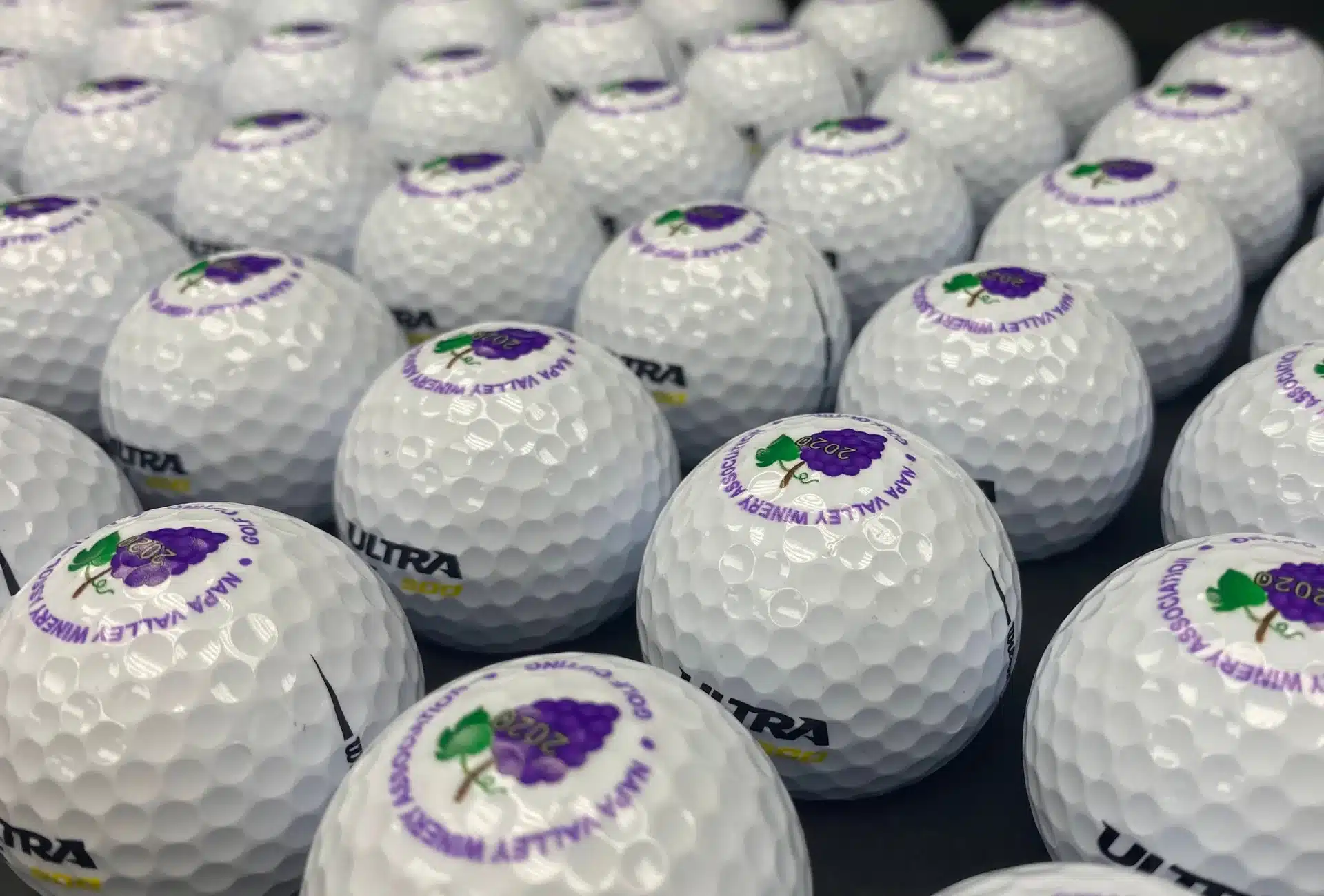
The article, “The Advantages of UV Direct to Substrate Printing Technology,” provides insights into the advantages of UV direct-to-substrate printing technology. It explains how this method offers faster drying times, superior image quality, enhanced productivity, and cost efficiency. It highlights the versatility of UV printing, including its ability to create textured effects and meet ADA compliance, making it suitable for various applications like signage, packaging, and personalized items.
Applications Across Industries
UV direct-to-object printers are highly versatile and find applications across a wide range of industries because of their precision and ability to print on various materials.
UV in the Promotional Products Industry
In the promotional products industry, they are used for creating customized merchandise such as logos, designs, and personalized messages on items like pens, mugs, phone cases, and USB drives. They also serve in producing corporate gifts with high-quality branding on awards, plaques, and executive gifts.
In retail and consumer goods, these printers enable the production of personalized products, including apparel, shoes, bags, and accessories, as well as custom home décor items like printed tiles, glass, and wood.
UV as used in the Electronics Industry.
The electronics industry benefits from UV printers for device customization, allowing for designs on phone covers, laptops, headphones, and gaming consoles, along with branding and labeling on electronic components and accessories.
The packaging industry utilizes UV printers for creating custom packaging, printing on boxes, cartons, and other materials to achieve unique and attractive designs. They are also used for prototyping, allowing quick and cost-effective creation of packaging prototypes for marketing and testing purposes.
In industrial manufacturing, these printers are essential for labeling tools and equipment with durable markings and for printing barcodes, serial numbers, and other identification marks on industrial components.
In healthcare, UV printers are used for printing on medical devices, equipment, and pharmaceutical packaging for branding and identification.
Automotive and Education Industry uses UV Printers as well.
The automotive industry leverages these printers for customizing car interiors, dashboards, and exterior parts, as well as for creating personalized designs on car accessories such as keychains, air fresheners, and seat covers.
Educational institutions utilize them for custom printing on school supplies like notebooks and backpacks, as well as for producing awards and recognition items such as trophies, medals, and certificates.
In the art and design sector, UV printers are used to create high-resolution art prints on canvas, wood, and other materials, including making custom signage for businesses, events, and exhibitions.
The adaptability and precision of UV direct-to-object printers make them invaluable in meeting the diverse needs of these industries, offering high-quality, durable, and customized printing solutions.
How to Choose a UV Direct-to-Object Printer for Your Business
Selecting the right UV direct-to-object printer for your business involves several crucial considerations to ensure optimal performance and value.
Begin by understanding your budget, weighing both initial costs and long-term savings. Analyze the space requirements to ensure the printer fits within your workspace. Match the printer’s capacity to your production volume and business goals. Research the cost of materials and consumables. Investigate the machine’s software requirements.
Evaluate the ease of use and learning curve, as user-friendly printers and proper training can enhance output quality. Finally, ensure the printer is compatible with the substrates you plan to print on.
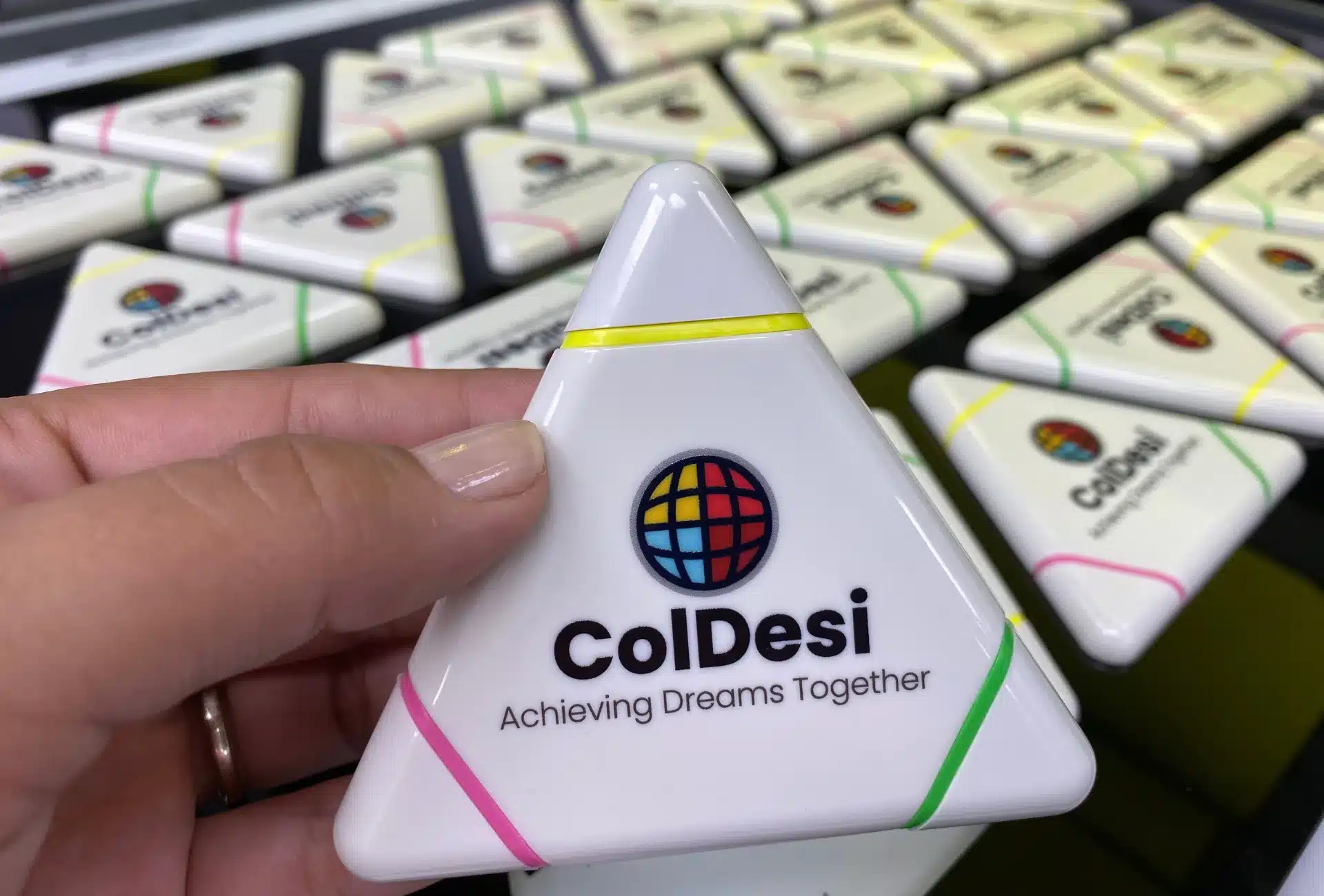
-
Understanding Your Budget: Check the initial costs and the long-term value. Higher-quality machines may have a higher upfront price but can save you money over time through greater efficiency and fewer maintenance issues.
-
Analyzing Size and Space Requirements: Consider the printer's footprint and how it will fit into your workspace. Smaller models are helpful if space is limited.
-
Evaluating Your Production Volume and Goals: Match the printer’s capacity to your business’s demands. High-speed printers are ideal for large-volume orders, while smaller operations might benefit more from compact models.
-
Researching Cost of Materials and Consumables: Assess the ongoing costs for ink, substrates, and maintenance. Some printers may have lower initial costs but could incur higher ongoing expenses.
-
Investigating the Machines' Software Requirements: Ensure you have the necessary processing software to manage your workflows effectively. Compatibility with your existing systems can streamline operations. Manufacturers have unique software for their brand. Third-party options are usually available, though they may come with extra costs.
-
Examining the Machines' Ease of Use and Learning Curve: Consider how user-friendly the printer is and the availability of proper training. This can impact the quality of your output.
-
Examining Blanks and Material Compatibility: Ensure the printer can handle the substrates you plan to print on. Different printers and inks are better suited for materials such as plastic, metal, glass, and wood.
